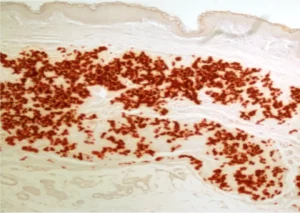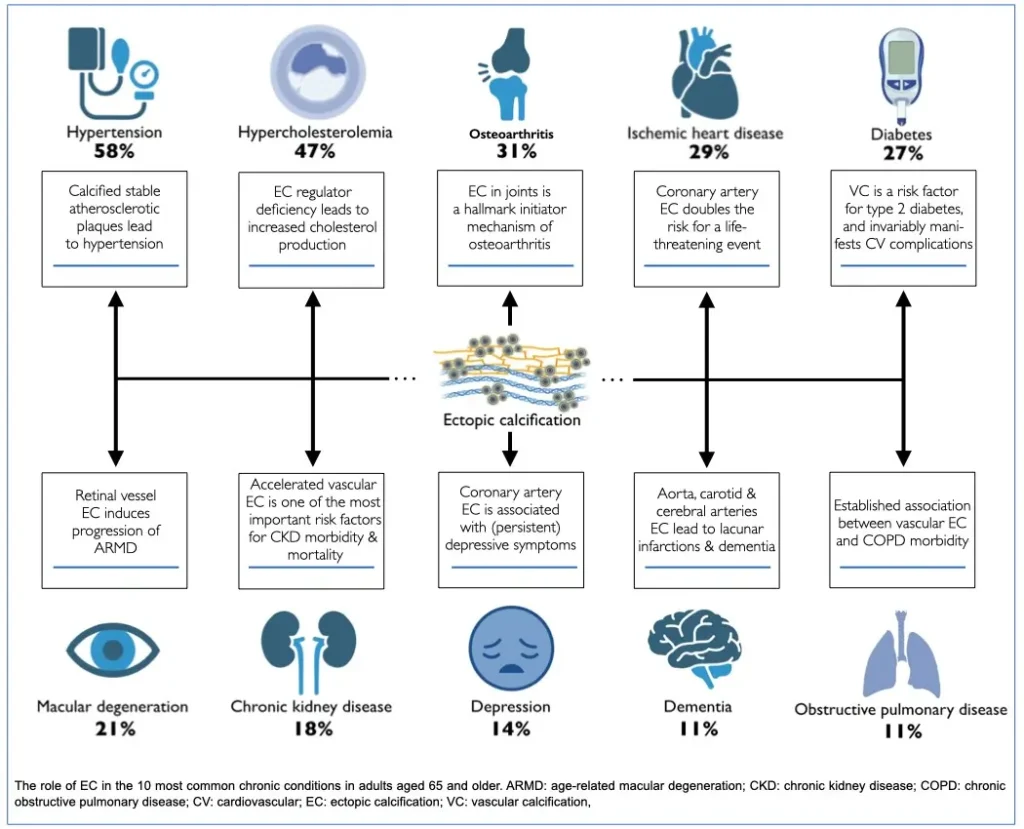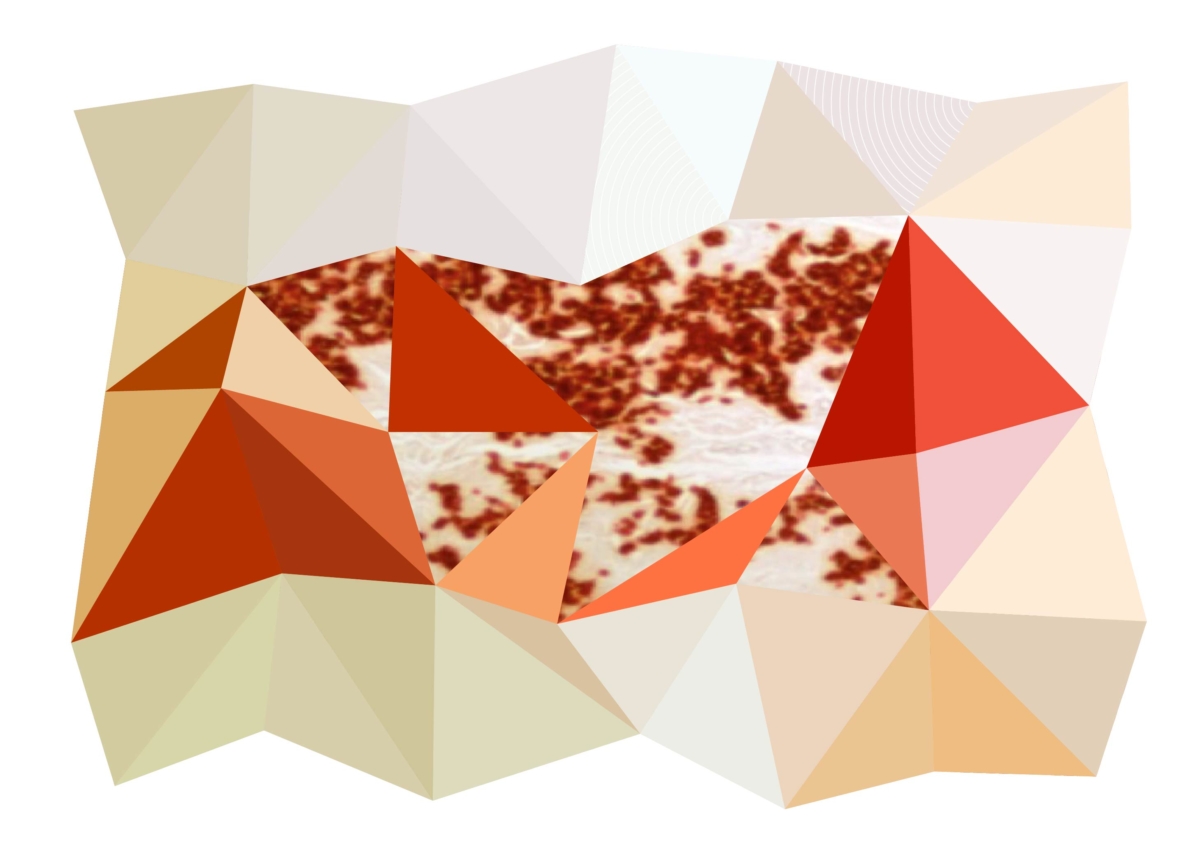
We all know the dangers of increasingly brittle bones as we age, but did you know that, in parallel, all our connective tissue, our cartilage and even our blood vessels, are inevitably hardening? Such hardening process, called calcification, is also behind the wrinkles in our skin. To a degree, some level of calcification is a normal part of aging, but to what extent is this inevitable? And might the process one day be reversed? Can our old skin be restored to its youthful luster?
Today, research aims to develop treatments for connective tissue calcification diseases, which are characterized by abnormal calcium deposition in connective tissues. While no “magic pill” currently exists for turning back the clock, scientists such as Prof. Oliver Vanakker, part of the COST Action A European Network for Connective Tissue Calcifying Diseases (EuroSoftCalcNet), are working to better understand the mechanisms that cause calcification, and to develop new treatments to facilitate healthy aging. Olivier joins us today to share his insights, and to explain how EuroSoftCalcNet has helped with the recognition and awareness of this devastating condition, and advanced its diagnosis and treatment.
Connective tissue calcification and the slowing of a natural process
Biomineralization is a physiological process whereby beneficial calcification occurs in bone, teeth and cartilage. But unwanted calcification can also occur: ectopic calcification. Nearly all tissues in the human body can calcify, potentially leading to significant morbidity and mortality.
To some extent, we all suffer these effects. As we age, the elastic fibres in our tissues break, causing our skin to wrinkle. A similar process happens in blood vessels. Blood naturally contains high levels of calcium and phosphate. These elements would cause calcification at a young age were it not for certain regulatory mechanisms. These mechanisms include calcification inhibitors that prevent calcification in blood vessels and tissue such as the skin, kidneys, and liver, and calcification inducers that promote calcification in bones and teeth. The balance between these inhibitors and inducers is delicate. Poor regulation can lead to either less calcification where it’s necessary, causing osteoporosis, or more calcification in tissues where it shouldn’t occur.
Magnesium and vitamin K are known calcification inhibitors. But the amounts found in food, vitamin supplements, or even in magnesium pills, are vastly insufficient to counteract ectopic calcification. Additionally, multiple mechanisms lead to calcification, each interacting with the others. Supplementing our diets, even in sufficient amounts, merely targets one, small piece in a sprawling network of causes responsible for ectopic calcification.
As Prof. Olivier Vanakker told us: “Currently, we are studying several drugs that play roles in ectopic calcification. We hope that one will prove to be effective in all areas of calcification, including the skin. For the moment, however, most of these drugs target only blood vessels. Additionally, the animals used in this research—specifically mice and zebrafish—have a skin structure much less susceptible to calcification compared to humans. It is only when clinical trials are ultimately performed that any potential benefits to human skin will be known.”
We need to better understand the mechanisms of calcification to deduce how we can safely mitigate its dangers and determine whether an individual is at-risk or not.

“The EuroSoftCalcNet COST Action has had a positive impact on the recognition and awareness of ectopic calcification, leading to improvements in diagnosis and treatment.”
Prof. Olivier Vanakker
Contribution and impact of EuroSoftCalcNet
EuroSoftCalcNet has had a positive impact on the recognition and awareness of ectopic calcification, leading to improvements in diagnosis and treatment. One of its most significant outcomes has been an increased collaboration among researchers. In this field, all collaboration is unique and highly valued. Researchers are supporting one another rather than competing. EuroSoftCalcNet has further strengthened this collaboration, with researchers sharing knowledge and students, and applying for grants together as a team. This collaboration, knowledge sharing, and databases creation are particularly important in the case of rare hereditary diseases related to calcification, as it is not easy to find sufficient patients and material.
Another outcome has been the creation of an online database compiling over twenty of the most common hereditary disorders. It allows researchers to input demographic-, clinical-, imaging-, and genetic data for each patient. This database, hosted in the restricted area of the INTEC website, enables scientists to compare patients sharing a single hereditary disorder, as well as discover manifestations and genetic data between different diseases.

Sustainability
The sustainability of EuroSoftCalcNet is ensured through the International Network on Ectopic Calcification (INTEC), which is sponsored by Ghent University. INTEC is a thematic network of groups and stakeholders who contribute knowledge and education, and help disseminate data. The network aims to create awareness of this devastating disease by comparing it to more familiar conditions like hypertension. For instance, just as high blood pressure negatively affects diabetes, so can calcification. Unfortunately, the latter condition is often overlooked, even when seen on ultrasounds or scans. This is why awareness is crucial, not just among physicians but also the general public.
In conclusion, INTEC shares the same philosophy as EuroSoftCalcNet, which is to advance the field, to connect people, and to facilitate interactions among stakeholders spanning researchers, clinicians, patients, and industry.
Additional information
International Network on Ectopic Calcification
Follow the research group on Instagram: @EctopicMineralizationResearch
